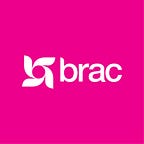Have you heard of BRAC?
Born in Bangladesh, BRAC is the largest development organisation in the world. It was even named the world’s top NGO in 2016 and 2017! But a lot of people don’t know about us, or the work we do. Here are 10 things that you need to know about the world’s biggest family.
1. BRAC has served a population that is double the size of the United Kingdom (plus Hungary)
Right after the independence of Bangladesh, BRAC was set up as a small relief organisation in 1972. Today it employs almost 120,000 people, in ten countries. Over the last 40 years, the organisation has reached a total of 138 million lives.
2. BRAC operates the world’s largest secular education system
BRAC runs 45,000 schools, which have graduated 10.8 million children to date. It currently has 900,000 students enrolled in its schools in Bangladesh, Afghanistan, Pakistan, the Philippines, Uganda, and South Sudan.
At the 10th Clinton Global Initiative Annual Meeting, BRAC committed to a five-year pledge to reach an additional 2.7 million girls with primary and pre-primary schools in low-income countries.
3. BRAC reaches 120 million Bangladeshis through its community health workers
BRAC’s cadre of 106,000 community health workers in Bangladesh are all women. They have provided ante-natal care to 25.6 million women, and post-natal care to 27.4 million women in Bangladesh. In the last 4 years, BRAC ensured the safe delivery of 2 million babies.
4. BRAC has ‘graduated’ 1.4 million households from living under USD 0.60 a day
For people who live in ultra poverty (under USD 0.60 a day), salvation comes in a variegate package. It includes providing access to basic healthcare, education for children, asset transfer, skills training, financial access, and social integration. Pioneered by BRAC, this ‘graduation approach’ (designed to bring the ultra poor households out of extreme poverty, and into to a more stable state) has gained international recognition as a proven solution to the harshest extremes of poverty. It has since been adopted by NGOs and governments around the world.
5. BRAC operates the largest non-government legal aid service in the world
For over 28 years, BRAC has been propelling legal aid for rural Bangladeshis. Over 6,000 ‘barefoot lawyers’ and trained community leaders spread human rights awareness and legal aid services into the heartlands of Bangladesh. Through its outreach, BRAC has provided human rights and legal education to 3.9 million women in Bangladesh.
6. BRAC provides 5.65 million women with access to microcredit and savings
BRAC was one of the first to lend small loans to women, via all women groups at their doorsteps. Today BRAC’s work in microfinance extends across seven countries, offering access to credit, savings, skills training, productive assets, and supply chains.
7. BRAC operates the world’s largest water, sanitation, and hygiene intervention, reaching 66.4 million people, and significantly changing behaviour towards hygiene in communities
Of these 66.4 million, 2.3 million now have access to safe drinking water. About 32.4 million people have been provided with hygienic latrines. Today, open defecation in Bangladesh has dropped to 3 per cent.
8. BRAC provides a safe space for over 320,000 adolescent girls to learn, share experiences, and plan their futures
BRAC operates 10,500 adolescent clubs for girls aged 13–25 around the world. These clubs promote life skills education, livelihood training, financial literacy, credit support, and community participation. With a strong focus on social and financial empowerment, these ‘safe spaces’ also sensitise and galvanise action in girls against early pregnancy and early marriage.
9. BRAC started using social enterprises in 1978, long before the Internet made it a thing
In 1976, BRAC started its sericulture project involving rural Bangladeshi women who represented a large cohort of the economically disenfranchised. Soon it surfaced that there were no markets to sell the silk products. This situation ushered the provenance of Aarong in 1978, a lifestyle brand that would go on to create a market for these rural women. Today, Aarong supports 65,000 artisans, 85 per cent of whom are women.
BRAC’s enterprises serve as development interventions, addressing gaps and allowing rural economics to grow and thrive. Enterprises such as BRAC Dairy, BRAC Artificial Insemination and BRAC Feed Mills are contributing to the development of Bangladesh’s entire dairy sector through breed development, market linkages and improvements in the value chain. Ultimately, they create livelihoods while bringing high-quality dairy products to consumers across the country.
10. BRAC taught over 14 million mothers how to prepare oral rehydration solution to treat children with diarrhoea
In the 1980s diarrhoea was the biggest killer of children under the age of one. Between 1980 and 1990, BRAC visited 14 million households, teaching mothers how to accurately prepare an oral solution (using a specific proportion of water, sugar, and salt) at home, to treat their children. Today Bangladesh has one of the highest usage rates of oral rehydration solution (ORS) to treat diarrhoea.
BRAC could not have made such impact without the dedicated support of its partners and donors.
There remains a lot to be done in the bid to end extreme poverty by 2030. We are dedicated to this cause, but we cannot do it alone. You can help by donating here.
Learn more at brac.net.
